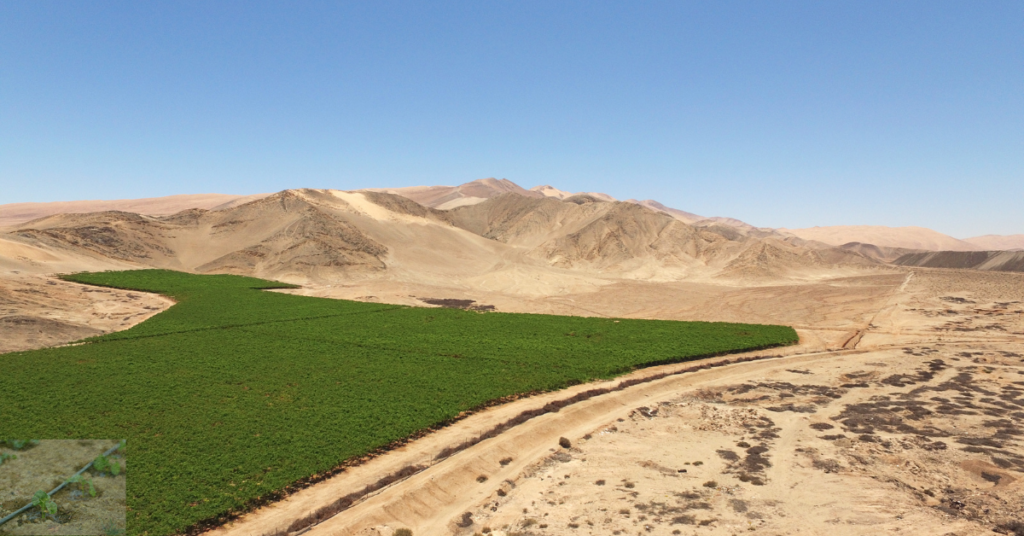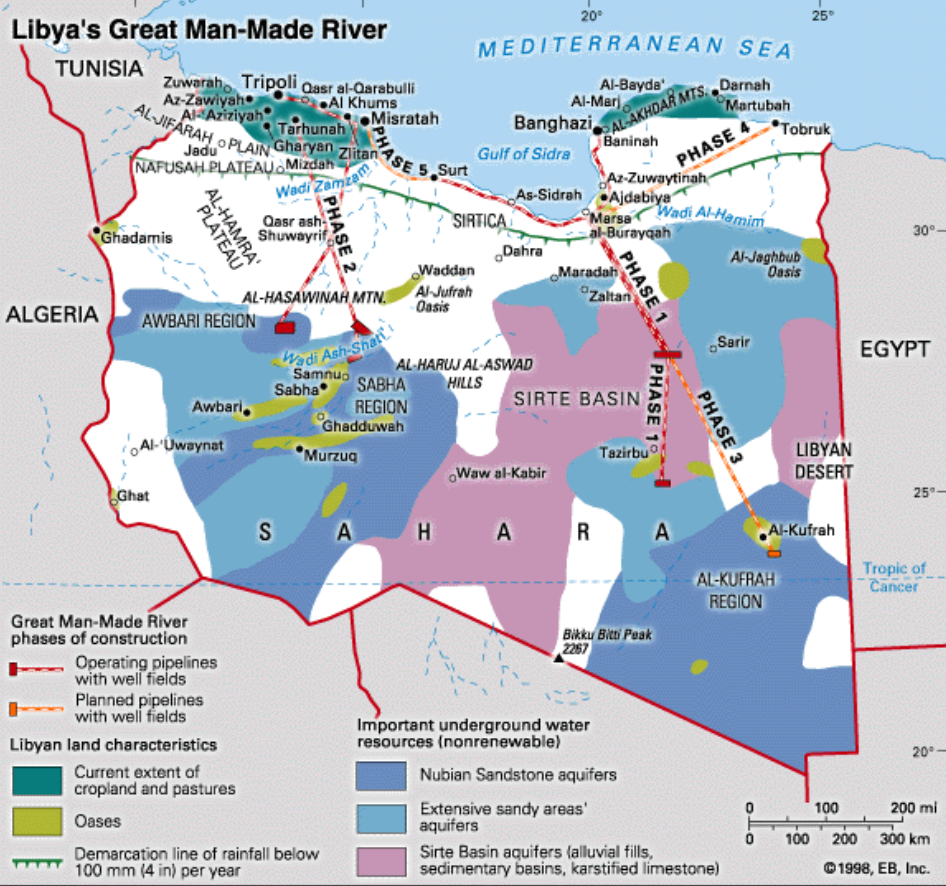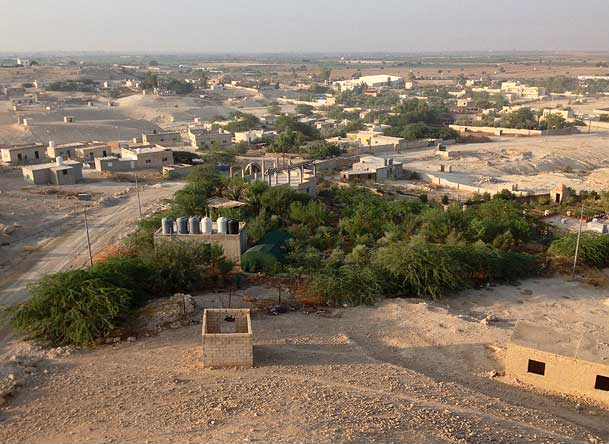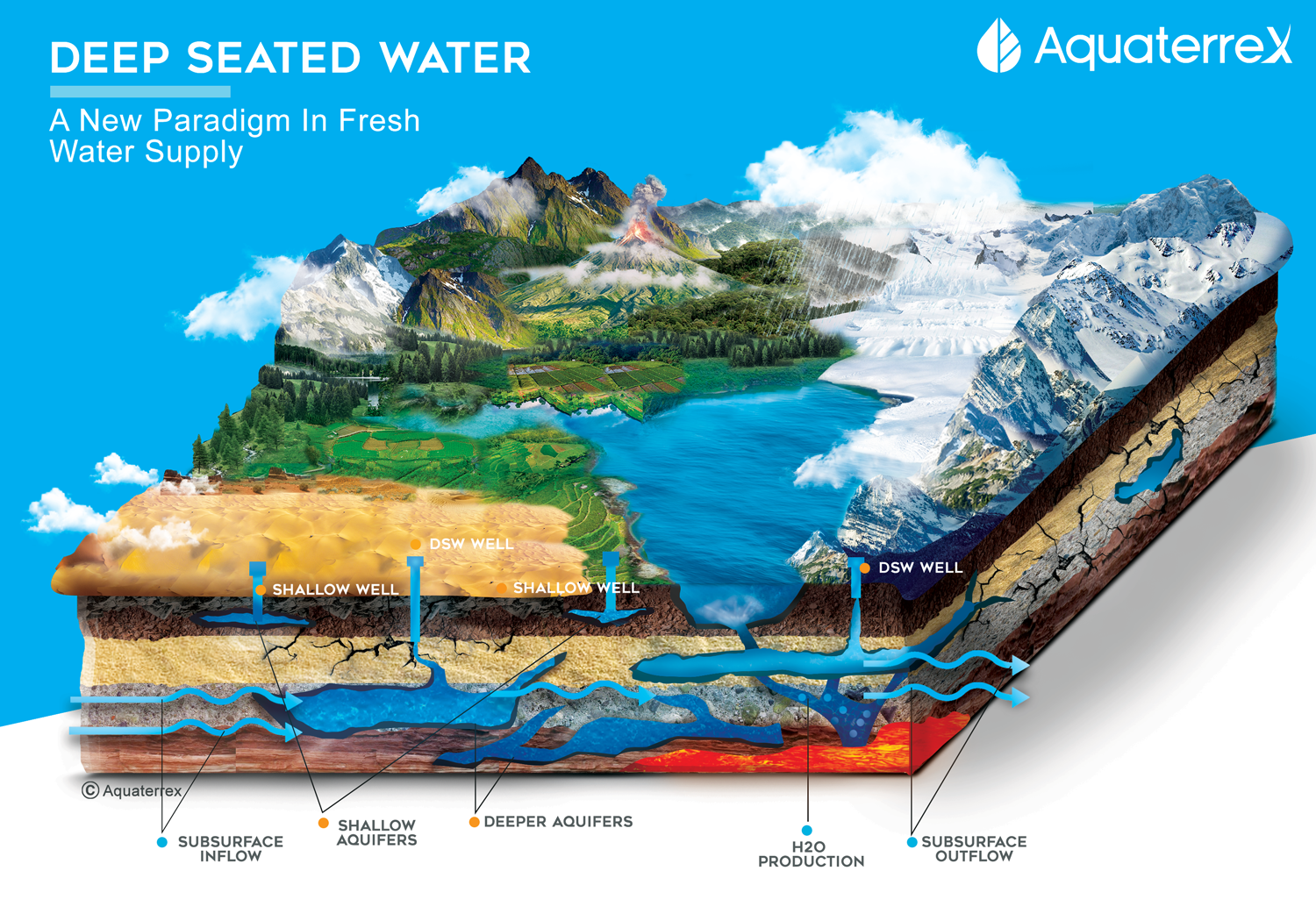
Successful Transformations: How Water Made the Desert Bloom
(This is part 3 of a 6-part series exploring transforming arid areas with water)
In our previous blogs, we explored the potential of turning arid and semi-arid lands into productive agricultural areas by introducing water and employing sustainable methods like permaculture. But these ideas aren’t just theoretical—there are real-world examples of projects that have successfully transformed barren landscapes into thriving ecosystems. In this blog, we’ll explore some of these success stories, including Libya’s Great Manmade River and Geoff Lawton’s Greening the Desert project in Jordan. We’ll also consider how the use of Deep Seated Water could accelerate these kinds of transformations and make them more sustainable.
Libya’s Great Manmade River: A Visionary Project
One of the most remarkable examples of large-scale desert transformation is Libya’s Great Manmade River. This ambitious project, launched in the 1980s, aimed to bring water from deep-seated aquifers in the Sahara Desert to the more populous northern regions of the country. The aquifers tapped for this project are thought to be one of the largest sources of fossil water in the world—water that has been stored underground for thousands of years.
The Great Manmade River is an extraordinary feat of engineering. It consists of over 1,300 wells, some drilled as deep as 500 meters, and a network of pipelines spanning 4,000 kilometers to transport water to the coastal cities. This project has provided fresh water for drinking and agriculture to millions of people in Libya and has turned previously arid land into fertile farmland.

Libya’s Great Manmade River. Courtesy of Encyclopedia Britannica.
The Role of Water in the Success of the Great Manmade River
The success of the Great Manmade River project hinges entirely on the availability of Deep Seated Water. Without access to this ancient water source, the agricultural transformation of Libya’s desert regions would have been impossible. Although the project has been successful, due to political and civil upheaval, it has not lived up to its potential. It also highlights the challenges of using fossil water—a non-renewable resource that may eventually run dry. Deep Seated Water is more often a renewable resource that recharges from water sources located over vast distances. This underlines the importance of carefully managing water resources and complementing such projects with sustainable practices to extend the benefits for future generations.
Geoff Lawton and the Greening the Desert Project
Another incredible case study comes from Geoff Lawton, a permaculture expert who has demonstrated how sustainable agriculture can transform some of the harshest desert environments. Lawton’s Greening the Desert project, located in Jordan’s Dead Sea Valley, is a shining example of how even the most arid landscapes can be restored through innovative techniques that work with nature.

The Jordan Valley Permaculture Project (aka ‘Greening the Desert – the Sequel’)
in November 2013. (Photo: Geoff Lawton)
In this project, Lawton and his team used permaculture principles to restore degraded soil, conserve water, and create a self-sustaining ecosystem. Techniques like swales (shallow channels that capture rainwater), mulch, and strategic planting of drought-resistant species helped to rebuild the soil and create a microclimate that retains moisture. Over time, the landscape transformed from a barren, salty desert into a thriving, green ecosystem capable of supporting agriculture.
The Role of Water in Greening the Desert
Water is, of course, critical to the success of the Greening the Desert project. In Jordan’s dry environment, where annual rainfall is scarce, the project relies on capturing and conserving every drop of rainwater. Techniques like building swales and using organic mulch help to slow down water runoff and allow it to soak into the ground, recharging the soil’s water reserves. Lawton’s approach shows how, even in places with extremely limited water resources, careful management can lead to remarkable results.
How Deep Seated Water Could Accelerate These Projects
While both of these projects highlight the importance of water in transforming arid landscapes, they also point to the challenges of securing a steady and sustainable water supply. In Libya’s case, fossil water provided the key to success, but the reliance on non-renewable water sources raises concerns about the future. In Geoff Lawton’s project, the challenge lies in making the most of limited rainfall, which can slow the speed of transformation.
This is where Deep Seated Water resources, like those that AquaterreX specializes in locating, could play a game-changing role. By tapping into deep-seated groundwater, it is possible to provide a more sustainable, long-term water supply to support large-scale desert transformation projects. These deep aquifers, which are often underutilized, represent a vital source of fresh water in many arid regions.

Deep Seated Water depiction of shallow and deeper aquifers.
Faster Transformation with Deep Seated Water
Imagine if projects like Geoff Lawton’s Greening the Desert had access to deep-seated groundwater in addition to the rainwater conservation techniques they already use. By introducing a reliable source of groundwater, the pace of transformation could be significantly accelerated. Instead of relying solely on the limited rainfall to establish crops and restore the soil, Deep Seated Water could provide the necessary boost during the early stages of the project. This would allow for faster vegetation growth, quicker soil restoration, and the introduction of more diverse crops and livestock.
Sustainable Water Management
While Deep Seated Water offers exciting possibilities, it’s essential that these resources are managed sustainably. Over-extraction could lead to depletion, as seen with Libya’s reliance on fossil water. However, with proper management practices, Deep Seated Water can complement other water conservation strategies like rainwater harvesting, ensuring that water use remains balanced and the ecosystem remains resilient over time.
Accelerating Transformation and Long-term Sustainability
The success stories of the Great Manmade River and Geoff Lawton’s Greening the Desert project provide a glimpse of what’s possible when water is introduced to arid landscapes. These projects demonstrate that with vision, innovation, and careful management, even the driest regions of the world can be transformed into productive, thriving ecosystems. As we look to the future, the potential for Deep Seated Water to accelerate these transformations and support long-term sustainability is immense. By combining innovative water management technologies with permaculture principles, we can unlock the full potential of the world’s arid lands and turn them into vibrant, green environments.
This blog article is part 3 of a 6-part series exploring transforming arid areas with water. Stay tuned for part 4 soon. If you missed earlier parts, read here:
Part 1 What If We Could Bring Water to Arid and Semi-Arid Areas?
Part 2 How Much Land is Arid or Semi-Arid, and What Will It Take to Make It Ready for Agriculture?